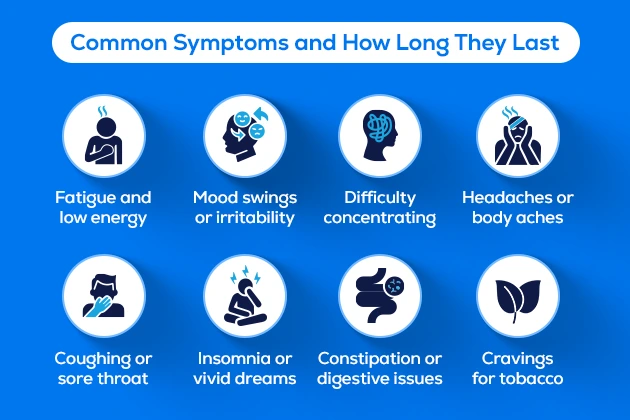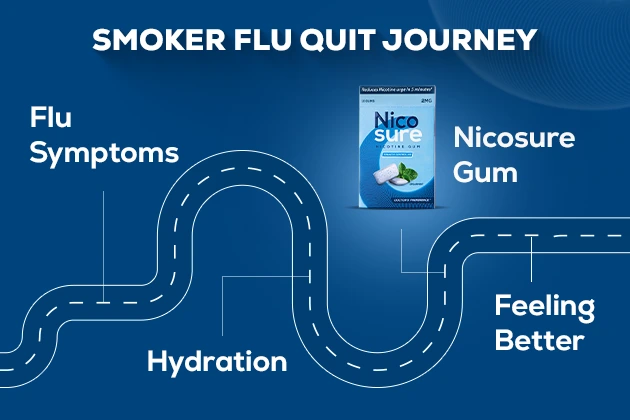Get Up to 50% OFF + Extra 15% OFF. Use Code: DHAMAKA15 | Shop Now !
Get Up to 50% OFF + Extra 15% OFF. Use Code: DHAMAKA15 | Shop Now !
August 11, 2025 0 Comments
Quitting nicotine is one of the best decisions you can make for your health. But if you suddenly start feeling sick, irritable, or foggy-headed after quitting, you may be experiencing what’s often called Quitter’s flu.
Though temporary, this withdrawal phase can feel a lot like the real flu. Understanding what’s happening to your body can help you manage Nicotine withdrawal symptoms and stay on track in your journey to becoming tobacco-free.
Quitter’s flu is a term used to describe the physical and emotional symptoms some people experience after stopping nicotine use. It’s your body’s response to adjusting without a substance it has depended on for years.
While not an official medical diagnosis, the symptoms are very real. The nicotine withdrawal timeline varies by individual, but these reactions are your body’s way of healing and rebalancing.
Centers for Disease Control and Prevention (CDC) notes that nicotine withdrawal includes physical and emotional effects such as fatigue, mood changes, and sleep disturbances.

These symptoms typically begin within 24 hours of quitting and peak within the first week. Most people see improvement within 2 to 4 weeks.
The National Institute on Drug Abuse (NIDA) states that withdrawal symptoms are strongest in the first few days and decrease in intensity after a few weeks.
You can reduce the severity of quitter’s flu symptoms with natural self-care strategies that support your body and mind during recovery.
Nicosure Nicotine Gums and Lozenges are designed to reduce withdrawal symptoms, including nicotine cravings associated with quitting smoking, quitting chewed tobacco, and gutkha containing tobacco.

In most cases, quitter's flu treatment can be managed at home. But if your symptoms are severe, prolonged, or interfere with daily functioning, it’s best to consult your healthcare provider.
See a doctor if you experience:According to Mayo Clinic, medical support may be necessary when withdrawal symptoms become extreme or disrupt normal functioning.
You’re not alone. Many people feel defeated during the first few weeks of quitting, but those who push through often share similar milestones.
“The first three days were the hardest. I felt like I had the flu with body aches, foggy head, no energy. But by week two, I was sleeping better and had more energy than ever.”
- Rajeev, tobacco-free for 8 months
“I kept lozenges with me at all times. That helped more than I expected. The cravings passed faster than I thought.”
- Aisha, former smoker and first-time quitter
These real-life experiences show that the smokers flu after quitting is temporary, and recovery is within reach.
Experiencing Quitter’s flu means your body is healing. Though it may feel uncomfortable, it’s a powerful sign that your system is clearing out nicotine and learning to function without it.
With time, patience, and smart coping strategies like nicotine gum and lozenges, you can manage your symptoms and reach the other side, stronger and smoke-free.
Every craving you resist is a step toward full recovery.